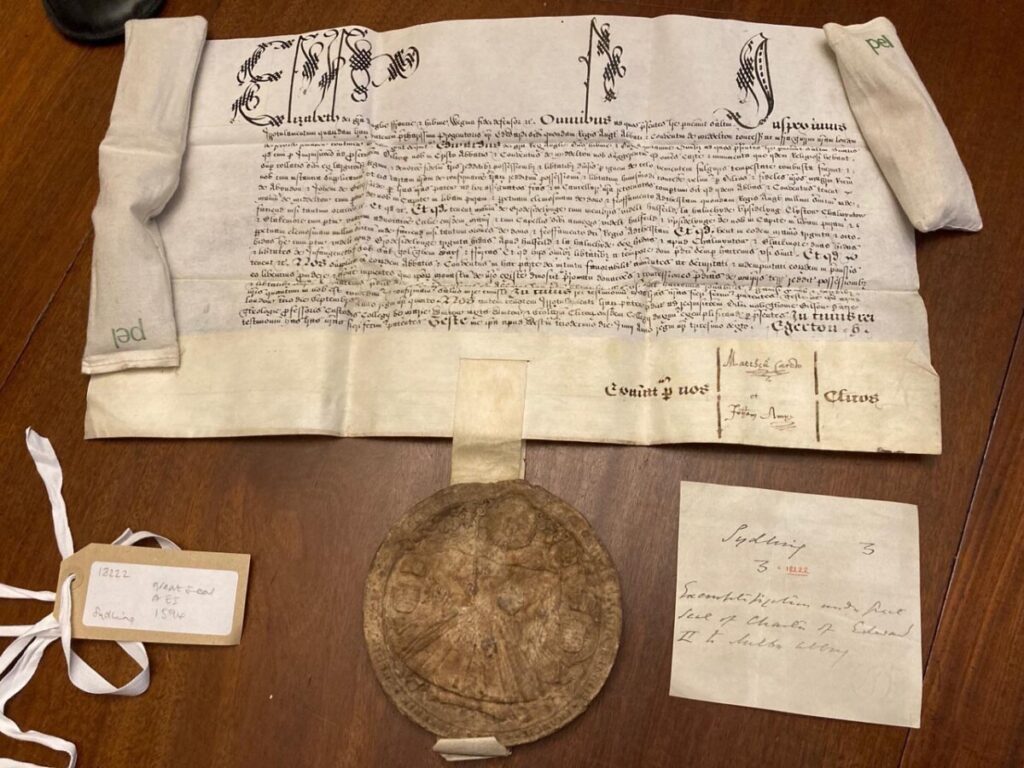We are a small group who are interested in the history of our village and its surroundings. We hope to research and put together as much as we can about its story over the centuries.
Click here to link to the Sydling History Society website.
There is much already documented in the excellent book “Sydling St Nicholas – Glimpses of its History” written in 1993, now sadly out of print.
But there is plenty more to discover!
We meet at the village hall most months, arrange occasional talks and displays, and put short articles of interest on the village Google group.
Sydling was owned by Milton Abbey in medieval times and so the history of the village is closely intertwined with that of the abbey. Below is a link to the Milton Abbas History Group’s Sydling section.
https://miltonabbashistorygroup.com/sydling-st-nicholas/
We plan to add more information to this as we learn more about this period of history.
If you would like any more information, please contact
Anne Brown
07503 155469
Sydling Historical Society
In the middle ages, Sydling was owned by the monks of Milton Abbas. It was granted to them, by King Athelstan in 933 AD. The abbey owned land in various places in Dorset, including salt pans at Ower, in Purbeck, and also woods in Stockland, over the Devon border, for timber production. But Sydling was one of their largest and richest holdings, with good pastures for sheep and cattle, and plenty of arable land, and it produced a great deal of food for the abbey.

Milton Abbey Manors
The Abbot was Lord of the Manor of Sydling, and held regular courts, in the manor house, (hence the origin of the name of Sydling Court, for the house which is still on the same site).
These manorial courts dealt with the day to day running of the village: disputes between neighbours, ownership of cottages and lands, deaths and inheritance. And less frequently, courts leet dealt with serious accusations and offences.
The monks kept meticulous and detailed records of the court proceedings, and also of periodic surveys and accounts of their possessions in Sydling; who was renting cottages and land, what acreage, where, how many animals they could graze, what rents were due, and what feudal duties the tenants must perform. These records give a really good picture of life here in that time.
After 600 years, in 1540, at the dissolution of the monasteries, Milton Abbey’s lands returned to the ownership of the crown. At that time, Henry V111 wanted some hunting grounds near Hampton Court, which belonged to Winchester College, so he swapped them for Sydling.
Winchester College owned Sydling, and held the Lordship of Sydling Manor, from then on. They sold some of their cottages in the 1950s, most of their farms in the 1980s, and finally Ham Farm and their last few fields around the village in 2008, ending nearly 470 years of tenure here.
Luckily for us, Winchester College Archives have stored and preserved all the old documents from Milton Abbey’s time, as well as their own court records, surveys and rentals, and so there is a wealth of information about Sydling’s past, waiting to be discovered.
The archivist at Winchester College curates these beautiful documents, which are available for anyone to peruse (by arrangement)

We plan to learn more, from these documents and the many other sources of information available, and to put occasional pieces on line, with interesting stories from the past, information about life in Sydling over the years, the people, the village, the farms, its place in history.
And to try and answer a few puzzles:
What happened to the Lost medieval villages of Elyston and Sydling Fifehead?
What was Marr’s Cross?
What are the stories of some of our oldest cottages and houses?
How did Sydling fare in the civil war?
What happened here in WW2?
And many other mysteries.
We will let you know, via the Informer, whenever something new is posted. Watch this space!
